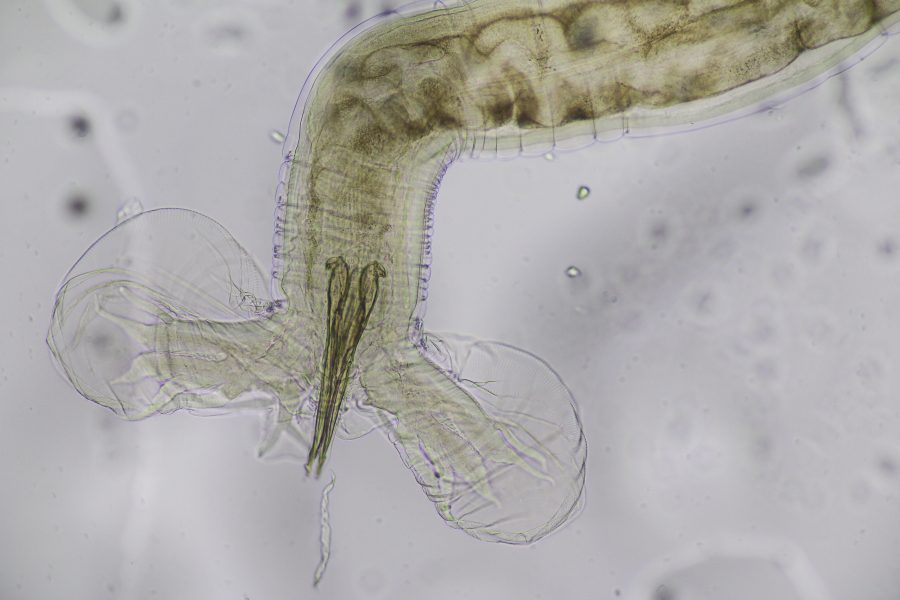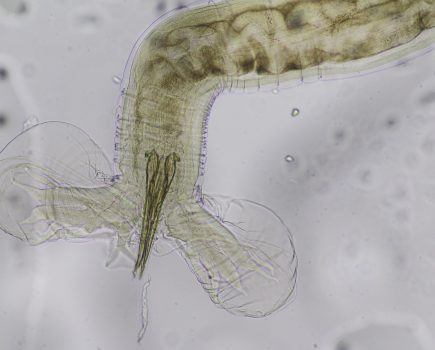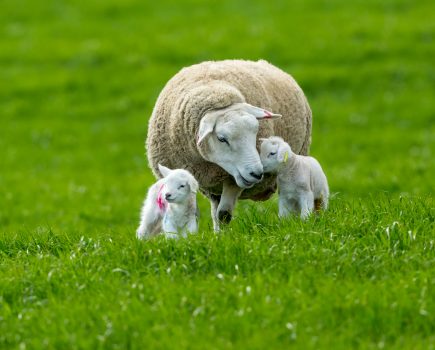Sophie Cranfield BVetMed MRCVS explains the need to be vigilant for the Barber’s Pole Worm.
It has again come to the time of year when we all need to be vigilant for haemonchus cases. Haemonchus contortus, or Barber’s Pole worm, is a nematode worm that sucks the blood from the host animal; sheep, goats, calves and camelids are all susceptible. The main difficulty with Barber’s Pole is that unlike other worms, scouring is not necessarily a clinical sign. This makes it harder to identify when looking at the herd or flock as a whole and requires a more thorough examination of individuals.
Key clinical signs are pale-to-white mucous membranes, lethargy, loss of condition and milk drop causing subsequent ill thrift in lambs. Animals also develop bottle-jaw, similar to that seen in fluke cases, due to low protein in the blood. In acute cases you may see sudden deaths in the flock.
The key to prevention is regular faecal worm egg counts (FWEC) to assess the burden on the pasture and within your flock. Gathering sheep for routine procedures such as shearing, foot bathing and fly control is an ideal opportunity to assess the mucous membrane colour of the sheep (inside the lower eyelid) and collect faecal samples. If collecting samples from the field they must be fresh (ideally still warm when picked up).
The lifecycle of haemonchus is 20 days, starting with the eggs hatching in dung on the pasture to L1 stage larvae; these then moult into L2 stage then L3. The L3 larvae then migrates onto the grass where it is eaten by the sheep. Inside the sheep the L3 larvae moults to L4 and attaches to the wall of the abomasum. It is here that they feed from the blood of the sheep, drinking up to 0.05ml per worm per day, meaning that animals with a high burden could be losing approximately 250ml of blood per day.
The L4 then moults to an adult worm which continues to drink the sheep’s blood. Once these worms mature they start producing eggs, up to 15,000 per adult female per day. The period from ingestion of the L3 larvae to production of eggs is only 14 days; it is worth noting that FWEC during this time will come back negative in a new infection – hence the importance of regular FWECs.
Yellow or clear wormers can be used to treat haemonchus. These treatments should be followed up with a post-drench FWEC (seven days for Yellow, 14 for clear) to assess whether or not the wormer has worked and monitor any resistance in the worms. These tests can be performed via the annual health and welfare review funded under the Sustainable Farming Incentive.
Closantel, a fluke treatment, can also be used to treat haemonchus without encouraging resistance in other worms, but in a mixed infection it will not treat for other roundworms and so this is most useful if speciation has been performed and it has been confirmed that the burden is chiefly haemonchus.
Following strict biosecurity protocols regarding quarantine doses of wormer when bringing in new sheep is vital for control of haemonchus and other parasites, as well as other communicable diseases. Haemonchus can lay dormant inside the host over winter, so quarantine drenching is necessary even if the sheep have been housed over winter.
Due to the rapid progression of the disease, reducing the burden of worms on the pasture is the ultimate goal. Resting pastures can reduce the burden of haemonchus. Resting for two months minimum, ideally three, can markedly reduce the amount present.
The vaccine Barbervax is currently available to the UK under special import; this vaccine promotes production of antibodies in the sheep which are then ingested by the worm in a blood meal. These antibodies attack the intestines of the worm and prevent them from producing eggs, eventually killing the worm. Repeated doses are needed for the vaccine to be effective, with approximately five doses likely to be necessary over the risk period. The vaccine does not prevent other gastrointestinal worms, therefore it does not completely remove the need for anthelmintic use, but it may vastly reduce the amount needed if haemonchus is the primary issue on your farm.
If you are concerned about haemonchus or have previously had an infection on your farm, speak to your vet to develop a parasite management plan.
For more like this, sign up for the FREE South East Farmer e-newsletter here and receive all the latest farming news, reviews and insight straight to your inbox.







